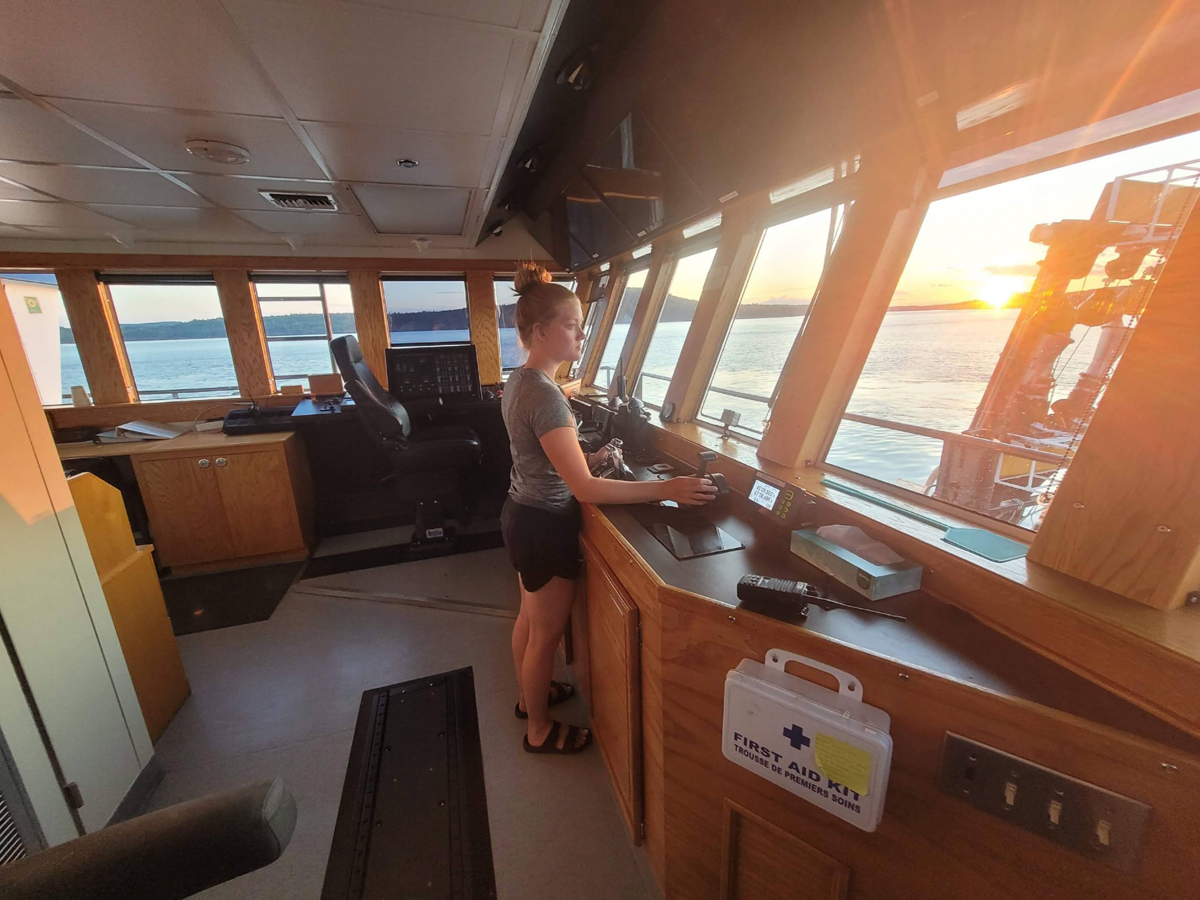Lauryn Delaney hadn't planned on becoming a mariner, but one day on a tugboat was enough to change the whole direction of her career.
"I had planned on becoming a firefighter and paramedic. I knew I wanted to have a hands-on job and not a 9-to-5," she says. "But then my mum, who works for a tugboat company, sent me out on a tug for a day. I got to spend time in the engine room learning how everything works, and in the bridge, the vessel's command centre. It was such an empowering experience to help steer the boat around the harbour. I thought, ‘I think this is what I'm meant to be doing!'"
Becoming a mariner
Lauryn decided to apply for the Marine Navigation Technology program at Nova Scotia Community College (NSCC). With just a month to go before the program was due to begin, she applied, got accepted and moved from her home in Saint John, N.B., to Port Hawkesbury, Cape Breton.
NSCC's Marine Navigation Technology program prepares students for a career as a ship's navigation officer. Lauryn learned the major principles of marine navigation, watchkeeping practices, seamanship, meteorology, ship construction and stability, and safety and communications. Students get to put their skills and knowledge into practice at on-campus firefighting and boat facilities, in ship simulators, and onboard vessels during their mandatory sea training.
NSCC's program is partly funded by Transport Canada's Marine Training Program, part of Canada's Oceans Protection Plan. The program provides funding to four partner institutions across Canada to deliver marine training to underrepresented groups, such as Indigenous Peoples, Northerners and women.
As part of the Marine Training Program, Lauryn was eligible for a bursary from the A'paqt (Oceans in Mi'kmaq) Project at NSCC to fund her studies.
"Receiving the bursary took a huge weight off my shoulders and allowed me to focus on my studies. It's a full-time, three-year program with very full and demanding days and mandatory sea time in the spring and summer, so juggling that and a part-time job would have been very stressful," she says.
Breaking down barriers for women seafarers
Lauryn graduated in 2022 and has since received her Watchkeeping Mate Certificate of Competency from Transport Canada. After doing her mandatory sea time with Cooke Aquaculture, a company based out of St. Andrews, N.B., they hired her full-time, making her the first female crew member in the company's 35-year history.
"When I started my cadetship, I felt like I had to prove myself—that I could lift heavy things without help, for example. I just wanted to be treated like any other crew member. Having a woman onboard for the first time was a learning experience for the crew, but I have developed a great relationship with them and feel very supported. I know there are a lot of companies looking for diverse crews and there are more women joining the marine industry now. I believe that the more women we have onboard ships proving they can do this job just as well as men, the better."
Career opportunities? The ocean's the limit
Lauryn has big dreams for her career at sea. She has her sights set on becoming a captain who can navigate a 500-tonnage vessel. And eventually, she would like to become a marine pilot, a highly trained mariner who guides large vessels through narrow, dangerous, or congested waterways.
"Growing up, I was always around water. I loved fishing on the lake with my family and being on the water with friends. I find it so peaceful. Now, working on a boat, I spend 14 days at a time with the same six people—they've become my second family. I get to experience marine life up close, and every day, I witness the most incredible sunrises and sunsets. I know I chose the right career for me."


